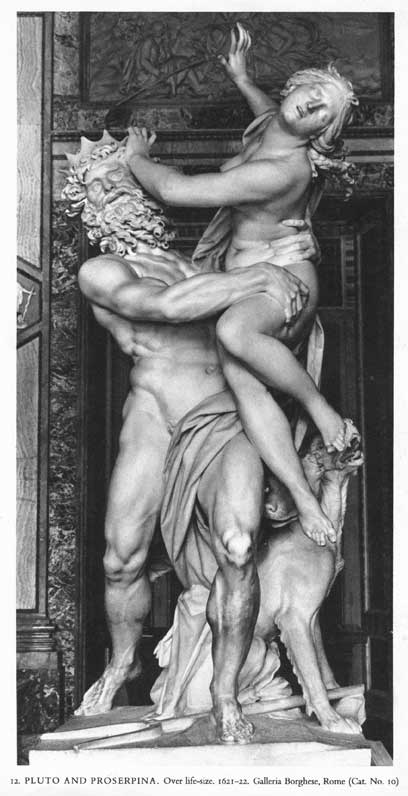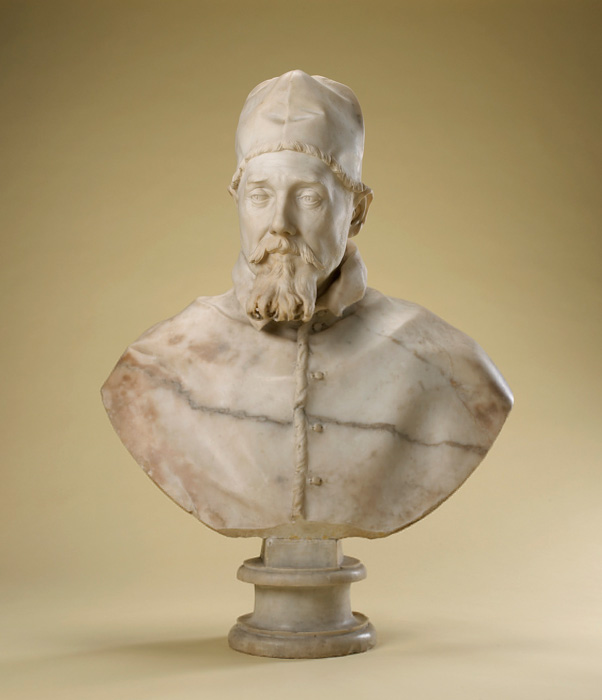Pope Urban VIII took a fatherly interest in his gifted protege. When Bernini fell ill, the pope visited him twice a day in his palazzo near the Piazza di Spagna and once came with sixteen cardinals, whose collective blessing was intended to spur a prompt recovery. During his visits the pope urged Bernini to marry; he had an investment to protect from the temptations that ravage the flesh. In 1639 the dutiful Bernini married the young daughter of a lawyer, who bore him eleven children. Another worry of the pope was the tempting offers that came from abroad. Cardinal Mazarin tried to lure Bernini to France with the promise of a salary raise. “Projects in France are begun in heat but end in nothing,” the pope warned.

Pluto and Prosperina, a rendering in marble of violent action, was done by Bernini at age twenty-four. Bernini strove to convey what was at the time an utterly novel sense of immediacy in sculpture. Movement sweeps back Prosperina’s hair and drapery, while Pluto’s fingers press in her seemingly yielding flesh. Image:http://europebyviewfinder.blogspot.ca/2010/08/colosseum.html
The death of Urban in 1644 was a double blow for the “Cavaliere.” Because the pope had raided the Vatican treasury to finance his embellishments of Rome, large scale patronage was interrupted. There was a city resolution directed against Bernini as “the instigator of the popes’ indulging in useless expenses in such disastrous times.”

—Gian Lorenzo Bernini, Maffeo Barberini, Pope Urban VIII, c. 1632, National Gallery of Canada, Ottawa. Photo © NGC.
Read More:http://arttattler.com/archiveberniniportraitsculpture.html
Furthermore, Urban’s successor, Innocent X, was an enemy of the Barberini family, and Bernini fell into a disgrace compunded by an architectural error: a bell tower he had built on the facade of St. Peter’s caused cracks in the structure of the church and had to be removed. Bernini’s rival Francesco Borromini, who had started out doing minor tasks for the Cavaliere, came into favor. But disgrace gave Bernini opportunity for private commissions, and it was during this time that he designed what he considered his most accomplished work: the chapel for Cardinal Cornaro.
Innocent X soon caught the virus for building. He erected a large family palace on the Piazza Navona, flanked by Borromini’s twin-towered church of Sant’ Agnese. When an impressive Egyptian obelisk was discovered in the Campagna, the pope decided it would be just the thing to decorate a giant fountain that would set off the church and the palace and make the Piazza Navona the artistic triumph of the pontificate. Bernini did a model of the proposed fountain, which a friend judiciously left in a room where Innocent X was bound to see it. Once again, Bernini was summoned to the Vatican. (to be continued)







 COMMENTS
COMMENTS



